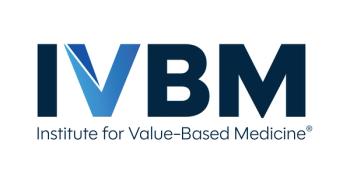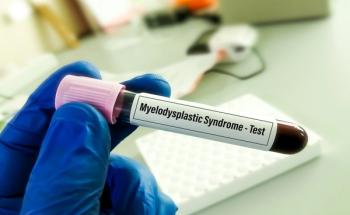
- August 2020
- Volume 26
- Issue 7
How DNA Medicines Could Transform Treatment of Glioblastoma Multiforme
Better technology is rekindling the promise of DNA medicines in oncology, including the treatment of glioblastoma.
By grade school, most of us have a basic understanding of DNA, or deoxyribonucleic acid, the essential building block of human life. It’s what makes our eyes blue or our hair straight. DNA medicines, however, are less well known and historically have been unsuccessful in delivering what 25 years ago was touted as a revolution in therapeutics.1 Contrary to popular opinion, DNA medicines are not synonymous with “gene therapy,” but they have been challenged by the same biases and presumptions, and because of that, DNA medicines have failed to gain therapeutic ground in the treatment of human disease. Until now.
A recent resurgence of DNA medicines is due in large part to improvements in the technology that has enabled their reintroduction into the clinic. Over the past several years, Inovio, a small biotechnology company outside of Philadelphia, has begun to master the utility of DNA medicines and to optimize their delivery for clinical use in treating and preventing human disease. Inovio is currently investigating its DNA medicines using a proprietary platform that couples optimization of DNA plasmids with effi cacy-enabling delivery through the use of a smart device known as Cellectra (
Most recently, the company has received signifi cant media coverage for INO-4800, a DNA vaccine designed in 3 hours and brought from the bench to the clinic in 83 days to support the fight against coronavirus disease 2019.3 But the company’s history dates back several decades to the creation of its first products, followed by clinical investigation into the treatment of human papillomavirus–related diseases, such as cervical intraepithelial neoplasia (CIN). Its most advanced DNA medicine candidate, VGX-3100, is currently in a phase 3 trial for the treatment of high-grade CIN.4
The proprietary technology uses a computer algorithm to build DNA medicines that can target almost any antigen that can be presented to the human immune system through the major histocompatibility class I system. DNA medicines are built in the form of circular strands of synthetic DNA called plasmids, which can neither propagate nor integrate into the human genome.
These plasmids have several specific and unique characteristics:
• First, they are designed to produce an optimal immune response when translated by the cell in which they are taken up.
• Second, they are able to be designed to any antigen that the human immune system can recognize.
• Third, they are translated as full-length proteins, which allow the cell to process and present the encoded antigen as intended by the native immune system.
• Finally, they are able to be kept, stored, transported, and dosed under a range of conditions and temperatures that support an extended shelf-life and optimal supply chain.
Taken together, these factors provide an extremely versatile platform that can target and treat a range of human diseases. This is what has enabled Inovio to investigate multiple therapeutic areas simultaneously.
The DNA medicine plasmid technology is coupled with a smart delivery device that improves plasmid uptake and, subsequently, increases immunogenicity. The Cellectra device is responsible for improving DNA plasmid uptake into cells and is among the major advances in DNA medicines over the past decade. Prior to the use of the device, DNA plasmids, upon injection into the muscle or intradermal space, were less likely to be taken up by the cell, which prohibited their subsequent translation into suitable immunogenic proteins. But with the device, Inovio has used in vivo study results to demonstrate that immunogenicity can be increased 1000-fold, secondary to the ability for Cellectra to empower cells to take up the DNA plasmids and thereby translate their contents into viable antigens for the immune system to recognize.5,6
Applicability in Treating Glioblastoma
Glioblastoma (GBM), or grade IV astrocytoma, remains in the majority of cases an incurable and devastating disease. The disease originates from the supportive glial cells of the brain, and patients present at diagnosis with diff use disease that has locally spread throughout the cerebral cortex, even if radiographically appearing isolated.
Presentation can be sudden; common signs include headaches, ataxia, changes in speech or motor movements, and seizures. Although surgery is the initial recommended therapy, not all patients can undergo optimal or complete resection, depending on where in the brain the tumor is located.
Surgery is almost always followed by radiation and chemotherapy, usually with temozolomide; this standard was set 15 years ago7 and has changed very little since. At that time, temozolomide, when added to standard-of-care radiation, provided a median overall survival of 14.6 months, an advantage of 2.5 months over radiation alone. A slight but significant prolongation has been seen in patients who use the tumor-treatment fi eld device Optune, but this improvement is about 3 months.8
Several treatments have recently made their way to the clinic in an effort to harness the power of the human immune system to treat GBM. Many of these therapies aim to create a robust response to GBM. These include protein- or peptide-based vaccines; ex vivo manipulated immune cells, including chimeric antigen receptor T cells, which have been used in certain blood cancers; and checkpoint inhibitors, which been successful in treating multiple blood and solid tumor cancers. Unfortunately, several randomized studies of PD-1 receptor inhibitors have failed to demonstrate a clinical benefit in GBM to date.9 As such, patients with GBM continue to await a new therapy that can leverage or improve upon an immune response to GBM.
Inovio has developed INO-5401, a DNA medicine that is made up of 3 synthetic DNA plasmids encoding for human telomerase, Wilms Tumor 1 protein, and prostate-specific membrane antigen (PSMA). The company recently announced clinical data evaluating the percentage of patients alive at 12 months following their first dose of the DNA medicine candidate. INO-5401 was given with INO-9012, a synthetic DNA plasmid encoding for human interleukin-12, and with cemiplimab, a PD-1 inhibitor from Regeneron.10 In this 52-patient study, approximately 85% of patients were alive at 12 months, a potential improvement above historical controls (
Previous research had demonstrated that more patients were progression-free at 6 months than when compared with historical controls.12 Together, these promising, albeit early, clinical data provide hope that Inovio’s novel DNA medicines have the potential to extend overall survival in patients with GBM. Additional survival results of this study will be available toward the end of 2020.
Although it has taken more than a decade, DNA medicines are now ready for success not only against infectious diseases and precancerous conditions such as HPV-related cervical dysplasia, but against some of the deadliest diseases, such as GBM. With Inovio’s INO-5401 offering hope for patients with a fatal prognosis, there is the promise that technology can transform the treatment of GBM while improving quality of life and, ultimately, extending life.
Author Information
Jeffrey Skolnick, MD, is vice president of clinical development, Inovio.
References
1. Kutzler MA, Weiner DB. DNA vaccines: ready for prime time? Nat Rev Genet. 2008;9(10):776-788. doi:10.1038/nrg2432
2. DNA medicines explained. Inovio. Accessed July 13, 2020. https://www.inovio.com/dna-medicines-technology/#explained
3. Inovio announces positive interim phase 1 data for INO-4800 vaccine for COVID-19. News release. Inovio; June 30, 2020. Accessed July 13, 2020. http://ir.inovio.com/news-releases/news-releases-details/2020/Inovio-Announces-Positive-Interim-Phase-1-Data-For-INO-4800-Vaccine-for-COVID-19/default.aspx
4. REVEAL 2 Trial (Evaluation of VGX-3100 and Electroporation for the Treatment of Cervical HSIL). ClinicalTrials.gov. Updated July 2, 2020. Accessed July 13, 2020. https://clinicaltrials.gov/NCT03721978
5. Lin F, Shen X, Kichaev G, et al. Optimization of electroporation-enhanced intradermal delivery of DNA vaccine using a minimally invasive surface device. Hum Gene Ther Methods. 2012;23(3):157-168. doi:10.1089/hgtb.2011.209
6. Sardesai NY, Weiner DB. Electroporation delivery of DNA vaccines: prospects for success. Curr Opin Immunol. 2011;23(3):421-429. doi:10.1016/j.coi.2011.03.008
7. Stupp R, Mason WP, van den Bent MJ, et al; European Organisation for Research and Treatment of Cancer Brain Tumor and Radiotherapy Groups; National Cancer Institute of Canada Clinical Trials Group. Radiotherapy plus concomitant and adjuvant temozolomide for glioblastoma. N Engl J Med. 2005;352(10):987-996. doi:10.1056/NEJMoa043330
8. Optune patient website. Accessed May 18, 2020. https://www.optune.com
9. Bristol-Myers Squibb provides update on phase 3 Opdivo (nivolumab) CheckMate-548 trial in patients with newly diagnosed MGMT-methylated glioblastoma multiforme. News release. Bristol-Myers Squibb; September 5, 2019. Accessed July 13, 2020. https://news.bms.com/press-release/corporatefinancial-news/bristol-myers-squibb-providesupdate-phase-3-opdivo-nivolumab-
10. INO-5401 and INO-9012 Delivered by Electroporation (EP) in Combination With Cemiplimab (REGN2810) in Newly-Diagnosed Glioblastoma (GBM). ClinicalTrials.gov. Updated July 9, 2020. Accessed July 13, 2020. https://clinicaltrials.gov/ct2/show/NCT03491683
11. Reardon DA, Brem S, Desai AS, et al. INO-5401 and INO-9012 delivered intramuscularly (IM) with electroporation (EP) in combination with cemiplimab (REGN2810) in newly diagnosed glioblastoma (GBM): interim results. J Clin Oncol. 2020;38(15 suppl; abstr 2514). doi:10.1200/JCO.2020.38.15_suppl.2514
12. Reardon D, Nagpal S, Soltys S, et al. Abstract CT114: INO-5401 and INO-9012 delivered by electroporation (EP) in combination with cemiplimab (REGN2810) in newly-diagnosed glioblastoma (GBM) (NCT03491683). Society for the Immunotherapy of Cancer (SITC) 2019 Annual Meeting; National Harbor, Maryland; November 6-10 2019. doi:10.1158/1538-7445.AM2019-CT114
Articles in this issue
over 5 years ago
Where Myths Go to Dieover 5 years ago
FDA Actions Include Third CAR T-cell Therapyover 5 years ago
Best Cancer Tests Don't Reach All Who Need Themover 5 years ago
Choice Is Vital to Biosimilar Savings Picture, Panelists Sayover 5 years ago
MRD, Biomarkers in Multiple Myelomaover 5 years ago
Hospitals Vow to Fight Court of Appeals 340B RulingNewsletter
Stay ahead of policy, cost, and value—subscribe to AJMC for expert insights at the intersection of clinical care and health economics.





























































